
Plants contain an incredible wealth of chemicals, Tomáš Pluskal says
26. 06. 2024
As a newly graduated computer scientist, he had a thriving software company in Prague. However, his desire to perfect his karate took him all the way to Japan. What was initially meant to be a short trip turned into a ten-year stay. Not only did he earn a sixth-degree black belt, but also a PhD in molecular biotechnology – and found a wife. The interview with Tomáš Pluskal from the Institute of Organic Chemistry and Biochemistry of the CAS was published in the Academy's quarterly, A / Magazine.
*
You research interesting molecules found in plants. Have you come across any particular plant whose chemistry downright fascinates you?
It’s hard to pick just one species, but I think the one I’m most fond of is kava (Piper methysticum). It’s a psychoactive plant that has pleasant, relaxing effects and is used to make a drink of the same name that helps with anxiety, stress, and insomnia. Kava originates from Polynesia, where it is considered sacred.
Given the name, does it have anything at all to do with coffee?
Nothing whatsoever. Kava is made from the root of the kava plant and, unlike coffee, it tastes pretty awful – a bit like muddy water. However, in its native region, no important event is complete without this drink. It is served at weddings, receptions, celebrations, and even during business meetings, as it helps people get on the same wavelength.
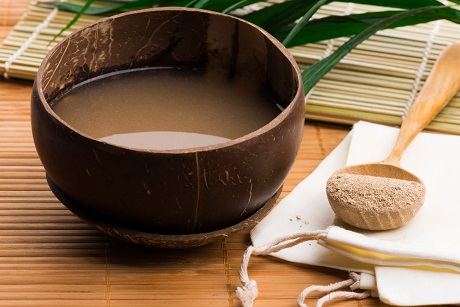
The kava drink, made from the root of the kava plant.
In the Czech Republic, we use alcohol for that...
Yes, but the effects of kava are the complete opposite. When a group of people has a few cups of kava, they talk more quietly, gradually dim the lights and music, and after a few hours, they mostly sit in silence. While alcohol makes people loud and lively, kava creates a very serene atmosphere. Although it doesn’t taste good, it makes you feel very pleasant.
You clearly speak from experience.
I studied the kava plant intensely for nearly five years during my postdoctoral fellowship at MIT in Boston. And you bet I’ve tasted it! We even held several kava sessions in our lab, guided by an expert who taught us the proper way to drink it. Consuming kava is quite the ceremony, abiding by many rules. It’s a social event – the fact that you share the drink with others enhances its effects.
So if someone drinks kava alone at home, it’s pointless?
Not at all. That’s something that’s also done, and it works. But it’s most effective in a group of friends. It’s interesting that very little is known about how exactly the plant affects the human brain or about the molecules responsible for its psychoactive effects. I found that fascinating, so I decided to study kava during my time in Boston. I wanted to discover how the plant produces these specific molecules.
And did you succeed?
I discovered the genes responsible for the production of these molecules. And that’s the foundation of success. That’s because you can then insert these genes into a microorganism that can be easily grown in a lab, like yeast, and get it to start producing those interesting molecules for you.
Does that mean that kava could be made without the kava plant root?
Yes. The kava plant only grows in the tropics, and over the long period of people cultivating it, it has lost the ability to reproduce on its own. Like bananas, it can only propagate by means of cuttings. There’s not much of the kava plant in the wild, so being able to “manufacture” its remarkable molecules some other way could be very useful. The method I mentioned is attractive not only in terms of sustainability but also in terms of cost.
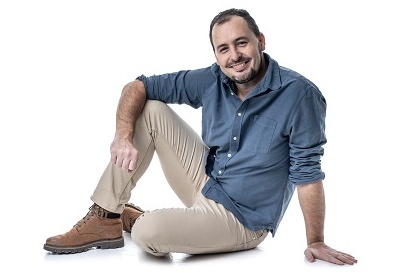
Yeast is pretty cheap labor, right?
Yeast is very low-maintenance. You can feed it biowaste and, in turn, it’ll produce valuable substances for you. And it’s not just about kava. These days, this method is gaining quite a bit of popularity. In essence, we’re trying to replicate natural mechanisms using genes to create natural substances without the use of organic chemistry.
So, you’re not trying to “mix” nature in the lab, but to get microorganisms to produce it for you?
You could say that. While organic chemists do tend to be miracle workers, rare natural molecules often have such complex stereochemistry it’s practically impossible to replicate them using organic synthesis. Chemists simply can’t produce them. And these are the kinds of molecules my lab at the Institute of Organic Chemistry and Biochemistry of the Czech Academy of Sciences is focusing on. Right now, for instance, we’re working with wolfsbane (aconite).
It’s highly poisonous, isn’t it?
It is indeed. People have been using wolfsbane as poison since ancient times. It contains a highly toxic alkaloid called aconitine, which, despite its toxicity, has certain positive effects that can be utilized in medicine. To date, no chemist has been able to synthesize this molecule, despite experts from all over the world attempting to do so for years. Yet monkshood, as the plant is also called, produces the molecule from carbon dioxide and sunlight alone. We’re now trying to crack its ‘trade secret’, but we’re going about it by way of genes.
One ordinary plant and it can engage legions of renowned experts…
No wonder. Plants contain an incredible wealth of chemicals. They can’t run away when something is troubling them. They can’t hide in the shade when they’re hot, move to a spot that gets more rain, or dodge being stepped on. What they can do is adapt and defend themselves against pests.
All thanks to chemistry alone?
Yes. There are several hundred thousand species of plants in the world. If you prepare an extract from one of them and put it in a mass spectrometer, you’ll find that the extract contains perhaps twenty thousand different substances. In another species, you’d discover a different set of twenty thousand substances. We currently know only a mere fraction of the enormous number of existing plant compounds.
Listening to you, it sounds as if flora represents a gold mine for chemists, right?
It really does. Over millions of years of evolution, plants have created an amazing array of bioactive molecules, which are an important source of chemical structures for the development of new medicines. Take, for instance, the Moroccan resin spurge [Euphorbia resinifera]. It produces a substance called resiniferatoxin, which binds to the human pain receptor. It works similarly to capsaicin, which gives chili peppers their spiciness, but it is a thousand times stronger.
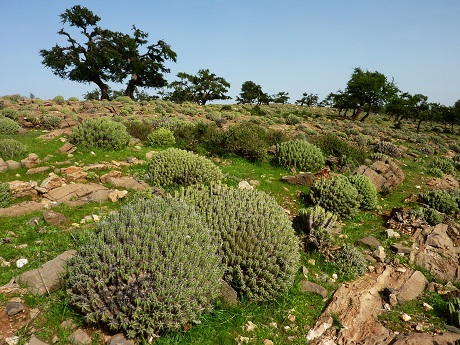
The Moroccan resin spurge, Euphorbia resinifera, produces the hottest chemical on Earth.
So it’s a thousand times hotter than chili peppers?
Yes. Resiniferatoxin is the hottest substance in the world. It can bind to the pain receptor so strongly that it essentially disables it. The neurons that register pain simply stop functioning, and the person no longer feels pain. Unlike opioids, which act in the brain and are associated with many detrimental side effects, resiniferatoxin can eliminate pain directly at its source.
Does this mean better days ahead for people that suffer from severe pain?
I hope so. The development of an analgesic out of this substance for severe chronic pain, such as that which comes with cancer, is already in the phase of clinical trials in the USA. Meanwhile, we at IOCB are trying to describe the principle of resiniferatoxin molecule formation so that we would be able to produce it without having to rely on the resin spurge.
Have you come across any other remarkable substances in your research similar to this one?
Another one that comes to mind is miraculin, a protein found in the berries of a shrub that grows in West Africa. It can bind to human taste buds and change the way they perceive taste. Once a person consumes miraculin, sour food tastes sweet. However, my lab isn’t focusing on that yet. Besides the resin spurge and wolfsbane (monkshood), we are currently researching plants that produce fluorinated molecules.
And do these plants work miracles, too?
Essentially, yes. Creating a chemical bond between carbon and fluorine is energetically very demanding. There are only a few plant species in the world that have evolved to be able to do this – species like Gastrolobium from Australia and one certain species of acacia can manage it. We’re trying to figure out how nature forms this rare bond and which enzyme it uses. If we could mimic this mechanism, we could create fluorinated molecules without the need for organic synthesis.
How do you look for plants with remarkable properties and effects?
We usually start with information from various chronicles of traditional healing. If a plant was used in ancient communities, it’s likely associated with some bioactivity and is worth investigating with modern technology.
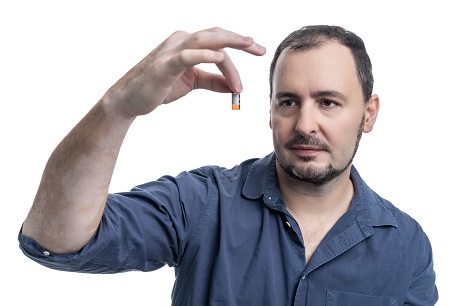
How do you examine it?
First, we need to measure its molecules using a mass spectrometer. It’s a complex and expensive device into which you spray a sample, such as a plant extract, and it analyzes it for you. Once we come across any interesting molecules and want to understand how they’re produced, we focus on the plant’s genes. Then comes the sequencing part. Once we have the results from these two experimental methods, machine learning and computational methods come into play to help us make sense of the data.
Do you grow your plant test subjects yourself?
We have a small greenhouse at the institute, but I must admit that plant cultivation is not our strong point. Keeping a tropical plant alive is a science in itself. I remember back when we obtained seeds of the Australian Gastrolobium genus and spent six months trying to get them to germinate. When we finally succeeded, all the seedlings died shortly after. So we took the extra seeds to the Botanical Garden in Troja, and within two weeks, they grew us beautiful plants. So we continue to expand our work connections with experts in tropical agriculture to prevent any future cultivation failures. (laughs)
And here I thought, looking at the collection of plants on your office windowsill, that you must be a born gardener.
Not at all. I’ve never been much into growing plants. The notion that I’d one day be working with plants never crossed my mind when I was young. As a kid, I wanted to be a garbage man when I grew up. At least that’s what I proudly proclaimed to my second-grade teacher when she asked what jobs interested us. I was fascinated by how garbage men rode on the back of the truck. And my teacher replied, “Well, I don’t know, Tomáš, you’re so good at math. Maybe it would be better if you became a scientist.” That was the first time I heard about the possibility of becoming a scientist.
Your teacher unknowingly predicted your career. I assume your parents preferred this path over you becoming a garbage man, right?
My parents both worked in banking, and my mom still thinks to this day that I would’ve been better off as a bank clerk. My science has always been a bit of a mystery to them. They didn’t really understand what I was doing. But they never tried to stop me, either.
So, did you take your teacher’s suggestion and start researching?
It wasn’t that simple. I got into science via a roundabout way – through computers. I got hooked on them at a young age. Unlike other kids who mainly just played games on early computers, I enjoyed coding as well. Applying for a computer science major after high school thus came naturally. I got so into it that I started a software company called Pohoda [Carefree] Software with a friend during my university studies.
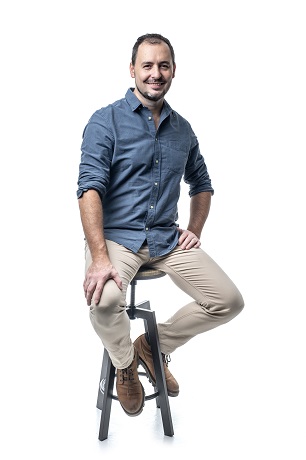
That sounds idyllic…
Millions of e-shops were popping up at that time, and everyone wanted to have a website. So, we were making good money, and it really was quite idyllic. But we were doing it pretty much on the fly, without any real vision, and after a while, I felt like I wasn’t really progressing. I had been practicing karate since I was thirteen, and I had a strong desire to improve my skills. So I left for Japan.
Just like that? On a whim?
No, I wasn’t that brave. I knew that if I wanted to stay there for a longer period, I’d need to find a way to support myself. So, I cast a wide net, contacting companies and universities, asking about jobs for a computer scientist. Most of them saw me as just a crazy guy from Central Europe with a passion for karate and didn’t even respond. But then I came across a molecular biology lab that showed interested. When I arrived in Japan, I started working there as a technician, helping with data analysis. But somehow, things took a different turn... (smiles)
You eventually earned a doctorate in the field and spent a whole decade in Japan. Clearly, you grew fond of the country.
Very much so. I lived on the small island of Okinawa, which is about two thousand kilometers south of Tokyo. It has such beautiful nature that even the Japanese go there on holiday. It’s like Hawaii for Americans. When I arrived, a new research institute was just being established there. It was literally being built on a meadow near the sea, and I was able to watch the birth of a new university, which is now a leading research institution. That impressed me. Just like the Japanese mentality did.
How did the Japanese win you over?
They can be very mindful. They don’t do anything rashly and think things through a lot. They’re very considerate and always concerned about how their actions will affect others. By the way, in the US, where I moved to after spending years in Japan, it’s the exact opposite – Americans are self-centered, loud, and assert their own ideas regardless of others. I have to say, the Japanese mindset suits me much better.
Even so, did you experience cultural shock in the Land of the Rising Sun?
I wouldn’t say so. Although some experiences were tougher. The society there can be very rigid. You must always respect the age hierarchy – the eldest is always right, and there’s no arguing with that. They also insist on strict rule-following, even in trivial situations.
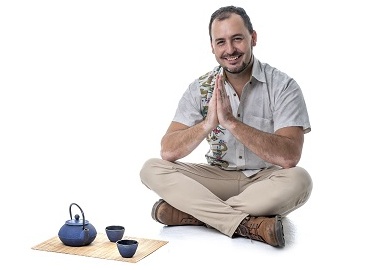
For instance?
Imagine you’re hanging out at the beach in the afternoon and at six o’clock, a bell rings to signal that the beach is closing. In Japan, they will literally pull you out of the water by force if you don’t comply. It’s closing time, period. There’s no point in explaining that you don’t mind that the lifeguard won’t be there and you just want to swim a little longer. But these are small things you just get used to. The local driving school turned out to be worse. That was really tough for me.
Do they have different traffic rules in Japan?
No, they don’t. But to pass the final driving test is an art in itself. I had my own car in Japan and drove daily because I had an international driver’s license from the Czech Republic. But it was only valid for a year, and then I had to take the local tests. I thought it would be easy peasy, since I had been driving for years. But I failed the practical test five times before I finally managed to pass.
Five times?! Were they that strict?
Not exactly. The problem was that the test didn’t check if you could drive, but if you could perform all the steps in the exact sequence taught in their driving schools. You basically have to put on a show, and if you do it according to their expectations, you get the license, even if you might not be a very good driver.
You went to Japan for karate. Did you improve in it over the years spent there?
I trained a lot there. I passed several exams for higher technical degrees, known as dan, and there are ten in total in karate. I arrived in the country with a first dan and left with a fifth. This spring, I returned to Japan for a month and passed the exam for the sixth dan.
And did you manage to learn Japanese as well?
I did learn to speak Japanese. I took courses right from the start. Training also helped, actually, because not much English is spoken in the karate community. And of course, my wife, whom I met in Japan, helped me a lot. However, I still haven’t properly learned to read and write. It takes more time and effort than I’ve been able to dedicate to it. Just for context: while Czech has twenty-six letters, Japanese has thousands of characters.
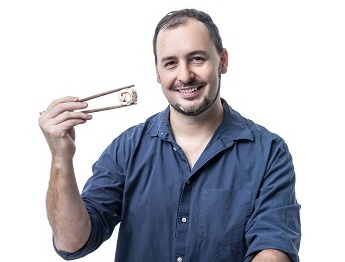
That’s not exactly a small number…
I know, right? But I was surprised to find that mastering spoken Japanese wasn’t as difficult as I thought. In this case, the language reflects the mentality – people don’t talk much; they think more. Their sentences tend to be sparse on information, because the rest is understood from context. Therefore, all you need is a relatively small vocabulary and a basic grasp of grammar to express quite a lot. In Czech, it’s the opposite – you have to master a myriad of rules and principles to string together a simple sentence.
Do you speak your wife’s native language at home with her?
Usually, yes. Our two young sons are bilingual – my wife speaks to them in Japanese and I speak to them in Czech. Although sometimes I slip into Japanese too. Occasionally, English gets mixed in as well. Despite this, the children speak Czech well. They go to a Czech kindergarten and speak Czech with their grandmother.
Did your years in Japan change you in any way? Did you pick up any new habits?
I went through a certain inner transformation there. I came back a slightly different person. But that’s more of an emotional thing that’s hard to describe. As for habits: I drink a lot of tea, but I was already doing that before I left. Karate had already been an important part of my life. However, I did develop a strong fondness for bathing while living in Japan.
In the sea?
That too, but I meant hot baths. Japan has a huge number of thermal baths called onsen. Thanks to them, I discovered that bathing is great for relaxation – you wash away all your stress. Before, lying around in warm water didn’t appeal to me much, but I got used to it in Japan. Later, when we were looking for a place to live in Prague, we had only one condition: the apartment had to have a bathtub!
Why did you eventually leave Japan?
I lived on a small island in the middle of the ocean for a decade, and after all those years, it felt like I had seen everything there. I needed a change of scenery. The change was also necessary for my career in science. If you want to build a career in science, you can’t stay in one place. You have to move around and gain experience wherever you can.
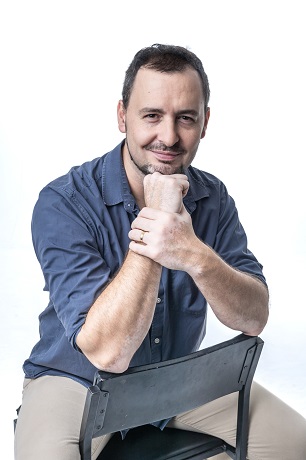
Did your wife mind leaving her home country?
Not at all. She has a very cosmopolitan nature. She lived in Australia for a year during high school, then studied singing in London, and traveled solo across Europe for a year… She has no problem living outside of Japan. She’d probably have a harder time if I told her I wanted us to stay on Okinawa forever. (laughs)
So you took her to Boston…
Yes. I found a fellowship at MIT in a lab that focuses on biosynthetic pathways and mechanisms in plants. The topic really intrigued me. I also got along great with the lab head, and I took a deep dive into the kava plant we talked about earlier. Working at MIT was very intense. I would often spend weekends in the lab. Everyone there works hard, and it’s contagious. And I learned so much there that I’ll be drawing from it for the rest of my life.
You spent almost five years in the USA. Then it was time for a change again?
I was on a postdoctoral fellowship there, aiming to describe the biosynthetic pathway of the psychoactive molecules in kava. Once I succeeded, I thought about what to do next and found out that the Institute of Organic Chemistry and Biochemistry [IOCB] in Prague was looking for the leader of a new lab. I was drawn to the idea of returning to Prague, so I applied and got the job.
You have experience with top-tier science in Japan, the USA, and the Czech Republic. Comparing these, does anything stand out to you?
It’s hard to assess Czech science from the position of a group leader at IOCB. It’s a unique workplace with funding, great equipment, amazing support… It’s somewhat of an exception in the Czech scientific environment, so my judgments might be skewed. My experience in the US isn’t entirely objective either, as MIT is quite a unique institution. However, I believe research and development in the USA is definitely more stressful than in the Czech Republic. You constantly have to fight for every dollar of funding.
But the eternal struggle for funding is also the fate of scientists in the Czech Republic, isn’t it?
That’s true, of course, but the pressure to perform here isn’t as intense as in the USA. However, this might relate to the fact that some Czech institutions are somewhat frozen in time. They lack the ambition to work on big projects with international impact. And that’s a shame. In the Czech Republic, there’s a bit of a lack of that American “think big” mindset.
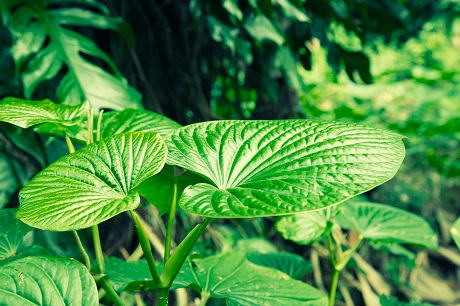
The kava plant grows on the Pacific Islands.
How did your wife acclimate here?
She really likes Prague. Sometimes she’s a bit unsettled when she encounters someone rude or grumpy in customer service. Recently, she went to buy a bouquet at a flower shop, and the salesperson was unpleasant and scowled at her. My wife was quite upset by it. It doesn’t surprise anyone here, but in Japan, it’s unthinkable. So we do sometimes miss the Japanese politeness. But even more, we miss the great food.
Don’t tell me you’re not a fan of dumplings?
We are, we love them. Czech cuisine is really not bad at all. But Japanese cuisine, with its ingenuity, is in a league of its own. Fortunately, there are a few places in Prague where we can go to indulge in it. Overall, we hardly miss anything in the Czech Republic. Besides, I’m lucky to be genuinely into the research on interesting plant molecules that my team and I are doing here.
When your work is also your hobby, it can be hard to switch off. Are you able to completely disconnect from research and not think about it?
Don’t worry, I can switch to relaxation mode. For instance, I’ve taken part in the “Vipassana” meditation course several times, during which you completely isolate yourself from reality for ten days. These courses are held all over the world. Upon arrival, you hand over your mobile and computer, there’s no TV or radio, and participants are not allowed to talk to each other.
A kind of therapy through silence?
Partly. You’re there, alone with yourself, meditating and learning to look within your mind. It’s challenging, but I always leave with a perfectly clear head. My wife has tried it a few times too and loved it. As parents of two small children, though, all we can do now is fondly remember those silent retreats—going away for ten days is currently unrealistic. But when our sons are older, we’ll definitely return to it. Until then, a bath and sports will have to suffice.
Karate, perhaps?
Spot on! However, I also enjoy cycling and skiing. Regular karate practice is essential, though. Two years ago, I even founded a small karate school in Prague where I train adults twice a week.
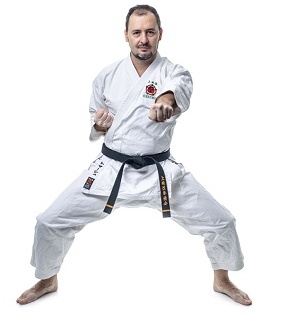
When you were a kid, why did you choose this martial art specifically?
I liked that you don’t need any equipment – you don’t need weapons, you work with your own body and that’s it. Plus, it’s not just a physical exercise where you can break a sweat. Karate also has practical applications, not just in self-defense, but in self-development as well.
Has karate ever proved useful in your everyday life?
It might surprise you, but I actually use it daily. And no, it doesn’t mean I’m out there brawling every day. (laughs) I use what I’ve internalized and mastered in karate. It teaches resilience, perseverance, focus, and the ability to pursue goals and defend your space. These are all qualities a scientist is in constant need of. You’re always striving to achieve something, applying for grants, competing...
Are you suggesting that your scientific achievements are linked to being a practitioner of karate?
It’s my path. Karate undeniably helps with personal growth. It’s no coincidence that most top executives in Japan practice martial arts. It really works! And I believe that without karate, I wouldn’t be where I am today.
_________________________________
Mgr. TOMÁŠ PLUSKAL, Ph.D.
INSTITUTE OF ORGANIC CHEMISTRY AND BIOCHEMISTRY OF THE CAS
Pluskal studied software engineering at the Faculty of Mathematics and Physics at Charles University in Prague. He earned his Ph.D. in molecular biology at Hiroshima University in Japan, where he lived for a decade. He then worked for nearly five years at the Whitehead Institute at MIT in Cambridge, USA. Since 2020, he has been working at the Institute of Organic Chemistry and Biochemistry of the Czech Academy of Sciences, where he leads a research group focused on plant metabolites. His research focuses on discovering bioactive molecules in plants and examining the tools for their biosynthesis.
_________________________________
The interview first came out in Czech in the 4/2023 issue of the Academy's quarterly, A / Magazine:
Written and prepared by: Radka Římanová, External Relations Division, CAO of the CAS
Translated by: Tereza Novická, External Relations Division, CAO of the CAS
Photo: Jana Plavec, External Relations Division, CAO of the CAS; Shutterstock
 The text and photos (excluding the photos of the flora) are released for use under the Creative Commons licence.
The text and photos (excluding the photos of the flora) are released for use under the Creative Commons licence.
Read also
- The Czech Academy of Sciences has appointed its new leadership for 2025–2029
- Literature is tied to its historical context. How can we read between the lines?
- Radomír Pánek: The Academy must be united, strong, and proactive
- A springtime booster: The healing potential of tree buds
- A novel compound that protects bone cells may benefit diabetic patients
- New interactive exhibition at the CAS showcases materials shaped by genius ideas
- Leaf growth, root formation, and reproduction – Look to hormones for the answer
- Without volcanoes, life on Earth wouldn’t exist, says Lukáš Krmíček
- What are the Open Science principles of the Czech Academy of Sciences?
- Meadow flowers unlocking evolution: Scientists decode Y chromosome DNA
The Czech Academy of Sciences (the CAS)
The mission of the CAS
The primary mission of the CAS is to conduct research in a broad spectrum of natural, technical and social sciences as well as humanities. This research aims to advance progress of scientific knowledge at the international level, considering, however, the specific needs of the Czech society and the national culture.
President of the CAS
Prof. Eva Zažímalová has started her second term of office in May 2021. She is a respected scientist, and a Professor of Plant Anatomy and Physiology.
She is also a part of GCSA of the EU.